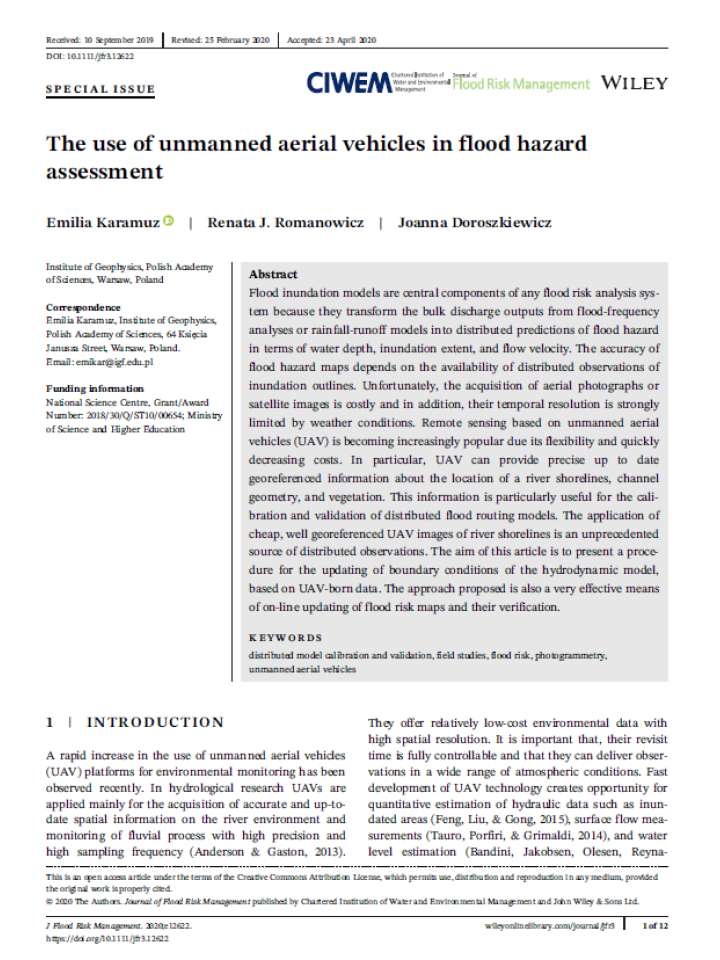The use of unmanned aerial vehicles in flood hazard assessment
The accuracy of flood hazard maps depends on the availability of distributed observations of inundation outlines. Unfortunately, the acquisition of aerial photographs or satellite images is costly and in addition, their temporal resolution is strongly limited by weather conditions. Remote sensing based on unmanned aerial vehicles (UAV) is becoming increasingly popular due to its flexibility and quickly decreasing costs. This study highlights that UAV can provide precise up to date georeferenced information about the location of river shoreline, channel geometry, and vegetation.
This information, authors argue, is particularly useful for the calibration and validation of distributed flood routing models. The aim of this article is to present a procedure for the updating of boundary conditions of the hydrodynamic model, based on UAV‐born data. However, there are many new problems to be solved related to the accuracy of the UAV‐based observations. New techniques are being developed regarding the methods of acquisition of UAV‐based data on processing newly obtained observations.
Explore further
